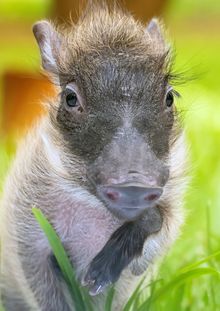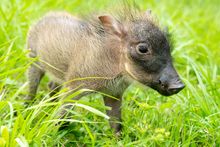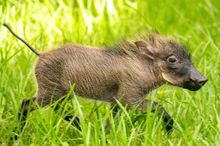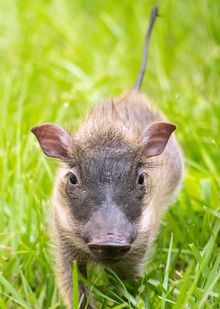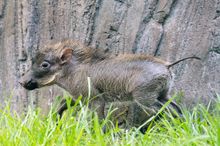 07 Jun 2025
07 Jun 2025
Tags: Wildlife, ZOOLIFE, ZooMiami, Africanwarthog, Miami

On May 3rd, Zoo Miami welcomed the birth of “Piggy Sue,” an African warthog! Her mother is 9-year-old Zoe, who was born at the Fresno Chaffee Zoo in California, and her father is 10-year-old “Beebop Wilson,” who was born at the San Diego Zoo Safari Park. Though Beebop Wilson has fathered previous offspring at Zoo Miami, this is the first time Zoe has given birth. As a first-time mom, Zoe did not demonstrate the ability to properly care for the newborn piglet, so the decision was made to hand-raise her with the goal of having her join Zoo Miami's ambassador team. Thankfully, she was in excellent health and took to the bottle very quickly.
During the past several weeks, zoo staff has been caring for Piggy Sue behind the scenes, feeding her a bottle every two hours! In her enclosure, she is surrounded by several enrichment items that she enjoys playing with including balls and plush toys. She has been conditioned to be comfortable around her keepers while learning fundamental behaviors that will be necessary for her to be a successful ambassador. Thanks to her excellent progress, she is now, along with a rotation of some of Zoo Miami's other ambassador animals, making regular appearances in the new ambassador habitats adjacent to the Sami Family Amphitheater. Though there is no guarantee when she will be out on the public habitat, the goal is to have her out daily for a limited amount of time. She is a bundle of energy, frequently sprinting and vocalizing in typical warthog fashion, giving her zookeepers a welcome challenge as they train her to become what is certain to be a crowd favorite!
Made famous through the memorable character, “Pumba,” in Disney's hit movie, “The Lion King,” the African warthog has become an extremely popular animal and is found throughout much of sub-Saharan Africa. Though not naturally aggressive, these wild pigs are quite capable of protecting themselves with large, powerful tusks which they normally use to tear up the ground in search of roots and grubs, and to establish dominance between them. Males develop considerably larger tusks than the females. The name warthog is a bit misleading because the protrusions that come out of the sides of their head are not actual warts but rather fatty, granular tissue. Males can grow to weigh over 200 pounds with females being closer to 150 pounds.




